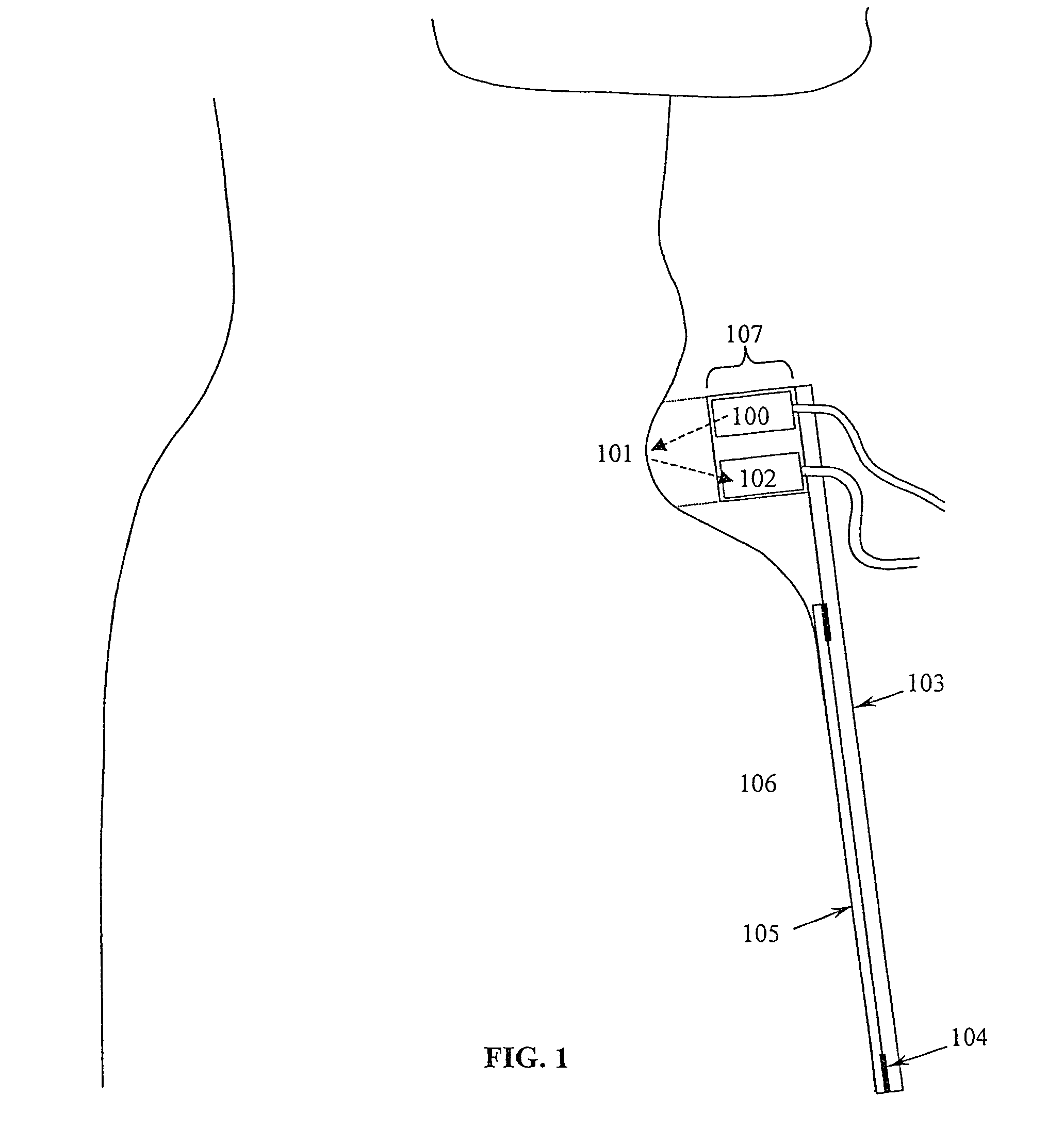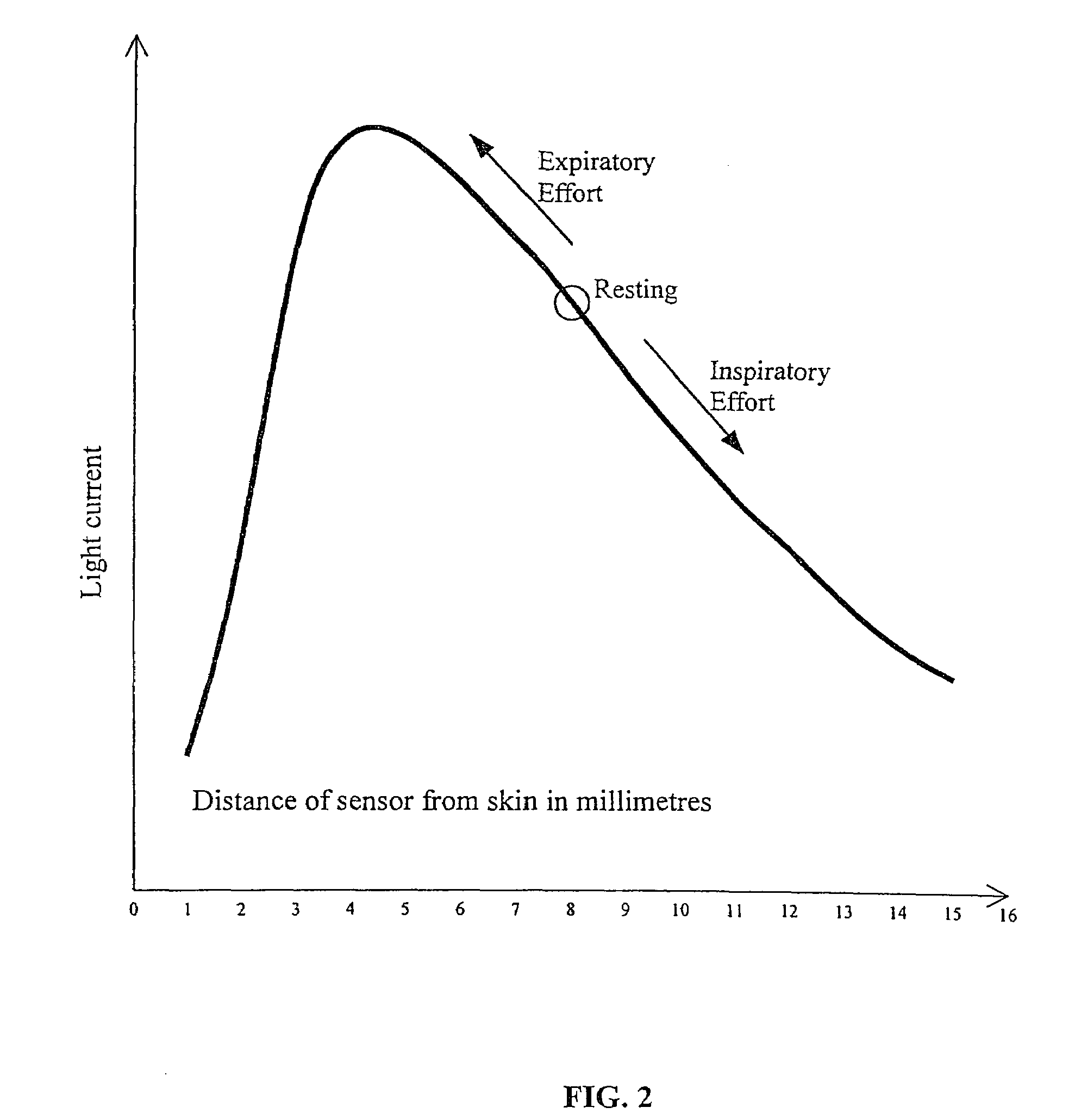Ventilatory assistance using an external effort sensor
a technology of effort sensor and ventilator, which is applied in the direction of valves, respirators, mechanical devices, etc., can solve problems such as unreliability of measures, and achieve the effects of improving patient-machine synchronization, robustness and ease of use, and improving patient-machine synchronization
- Summary
- Abstract
- Description
- Claims
- Application Information
AI Technical Summary
Benefits of technology
Problems solved by technology
Method used
Image
Examples
Embodiment Construction
[0026]1. Suprasternal Notch Optical Effort Sensor
[0027]The preferred embodiment of the present invention uses an optical sensor, such as an infrared proximity sensor, to measure the depth of the suprasternal notch, as shown in FIG. 1. A light source 100 shines light on the skin of the suprasternal notch 101, and the reflected light is received by photocell 102. (The term “photocell” is used to refer to any device whose output is light sensitive, e.g., a photodiode, phototransistor, etc.) The combined sensor assembly 107 may be mounted on any surface which is relatively immobile with respect to the skin of the suprasternal notch, such as the sternum 106. A suitable method for attachment is to mount the sensor 107 on cantilever 103, which is then glued to the sternum using double-sided adhesive tape 104.
[0028]Preferably, the double-sided adhesive tape is not glued directly to the skin, but is glued to a layer of soft, spongy, low irritant, low allergenic self-adhesive material 105. A ...
PUM
 Login to View More
Login to View More Abstract
Description
Claims
Application Information
 Login to View More
Login to View More - R&D
- Intellectual Property
- Life Sciences
- Materials
- Tech Scout
- Unparalleled Data Quality
- Higher Quality Content
- 60% Fewer Hallucinations
Browse by: Latest US Patents, China's latest patents, Technical Efficacy Thesaurus, Application Domain, Technology Topic, Popular Technical Reports.
© 2025 PatSnap. All rights reserved.Legal|Privacy policy|Modern Slavery Act Transparency Statement|Sitemap|About US| Contact US: help@patsnap.com



